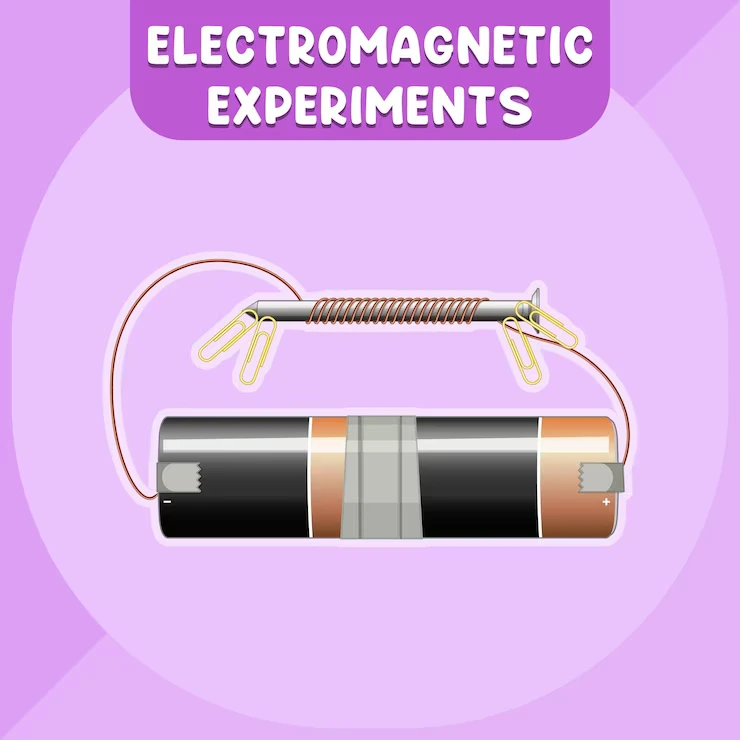The study of electromagnetism is a fascinating subject that has contributed to the modernization of society. The electrical inductor, a device with numerous uses, is one of the essential elements of this discipline. Electrical inductors are used extensively, yet they are still somewhat mysterious to many people.
One of the most exciting areas of physics is electromagnetism. It has revolutionized how we live because it enables us to comprehend and control the elemental forces of nature. The idea of electrical inductors is one of the fundamental ideas in understanding electromagnetic. However, many people need help to solve the electromagnetic puzzle because this subject is frequently perceived as complex and convoluted.
The study of electromagnetics is a vast field with several intricate elements and concepts that might be challenging to comprehend. The electrical inductor is one such element that is essential to many electronic systems and gadgets.
Here we will demystify the electromagnetic puzzle and provide the top 5 tips for understanding electrical inductors.
1. Understanding Inductance:
In many electronic devices and circuits, electrical inductors are crucial components. Inductance, measured in henries (H), is used to gauge the devices’ capacity to store energy in a magnetic field. Inductance and its impact on the operation of electrical inductors will be thoroughly examined in this article.
An electrical inductor’s fundamental property, inductance, is influenced by some variables. An inductor’s inductance is affected by several factors, including the coil’s design, core material, and turn count. The inductance rises with the number of turns in the coil. The coil’s geometry and core material can also impact inductance.
Inductance impacts several other qualities in addition to the ones that determine an inductor’s inductance. The ability of the inductor to resist variations in current is one such characteristic. Reactance is the name of this quality, quantified in henries.
2. The Relationship between Inductors and Current:
Electrical inductors are an essential component in electronic circuits and play a critical role in various applications. An inductor is a passive electrical component that stores energy in a magnetic field when an electric current flows through it. Understanding the relationship between inductors and current is fundamental to understanding how they work and are used in electronic circuits.
A magnetic field around the coil is created when a current flows through an inductor. The magnetic field produced by the inductor is directly proportional to the current that flows through it – the more substantial the present, the stronger the magnetic field. This magnetic field stores energy in the inductor.
When the current stops flowing through the inductor, the magnetic field collapses, and the energy stored in the magnetic field is released. This release of energy creates a voltage across the coil in the opposite direction of the original current. This phenomenon is known as self-induction and is responsible for the inductor’s ability to resist changes in current.
3. The Role of Inductors in AC Circuits:
Electrical Inductors play a crucial role in AC circuits. These components are used to control the flow of current and filter out unwanted frequencies. Understanding the role of inductors in AC circuits is essential for anyone in electrical engineering or related fields. In this article, we will dive deeper into the concept of inductors and their role in AC circuits.
Inductors are passive electrical components that store energy in a magnetic field when an electric current flows through them. They are made of a coil of wire, known as the winding, typically wrapped around a core made of a magnetic material such as iron.
When an AC voltage is applied across an inductor, the current alternates between positive and negative values. As the direction of the recent change, the magnetic field around the inductor also changes direction, which creates a negative voltage that resists changes in the current.
When it comes to AC circuits and the crucial role of inductors, understanding their functions is essential for electrical engineers and professionals. In Oslo, Norway, finding a skilled electrician is necessary. Finn elektriker i Oslo, who can provide expertise in handling inductors and their applications. Inductors, composed of a coil of wire around a magnetic core, store energy using magnetic fields. They control current flow, filter frequencies, and create phase shifts in AC circuits.
4. Types of Inductors:
Electrical Inductors are an essential component of many electronic devices. They are passive devices that store energy in a magnetic field when an electric current flows through them. Inductors are used in various applications, including power supplies, filters, transformers, and oscillators. Many different types of inductors are available today, each with unique characteristics and advantages.
One of the most common types of electrical inductors is the air-core inductor. Air-core inductors are constructed using a coil of wire with no magnetic core. These inductors have a low inductance but are ideal for high-frequency applications because they have low losses and resistance. Air-core inductors are used in radio frequency (RF) circuits, filters, and antennas.
5. Factors Affecting Inductor Performance:
Electrical Inductors are crucial components in many electronic devices. They are used to store energy in a magnetic field and are commonly found in power supplies, filters, and converters. However, the performance of an inductor can be affected by various factors that need to be considered.
One of the most important factors affecting an inductor’s performance is temperature. The inductance of an inductor decreases as the temperature increases. This is because the resistance of the wire used in the inductor increases with temperature, reducing the magnetic field strength. Therefore, it is essential to consider the operating temperature range of the inductor when selecting it for an application.
Another factor that affects the performance of an inductor is current. The higher the current, the stronger the magnetic field and the more energy is stored in the inductor. However, if the wind is too high, it can cause the inductor to saturate, decreasing inductance. Therefore, selecting an inductor rated for the expected current in the application is essential.
Frequency is another factor that affects the performance of an inductor. The inductive reactance of an inductor increases with frequency. This means that the inductor will have more excellent resistance to changes in current at higher frequencies. Therefore, selecting an inductor with a suitable frequency response for the application is essential.
Last Words!
Electrical inductors are a crucial component in electromagnetism, and their importance cannot be overstated. Although the concept of inductors can be complex and challenging to understand, their widespread use in electronic devices and systems has transformed our world.
As we explore the mysteries of electromagnetism, it is confident that inductors will continue to play a pivotal role in shaping our technological landscape and advancing our understanding of the forces that govern our universe.
To discover more about the hire a professional electrician, just click on this link.












